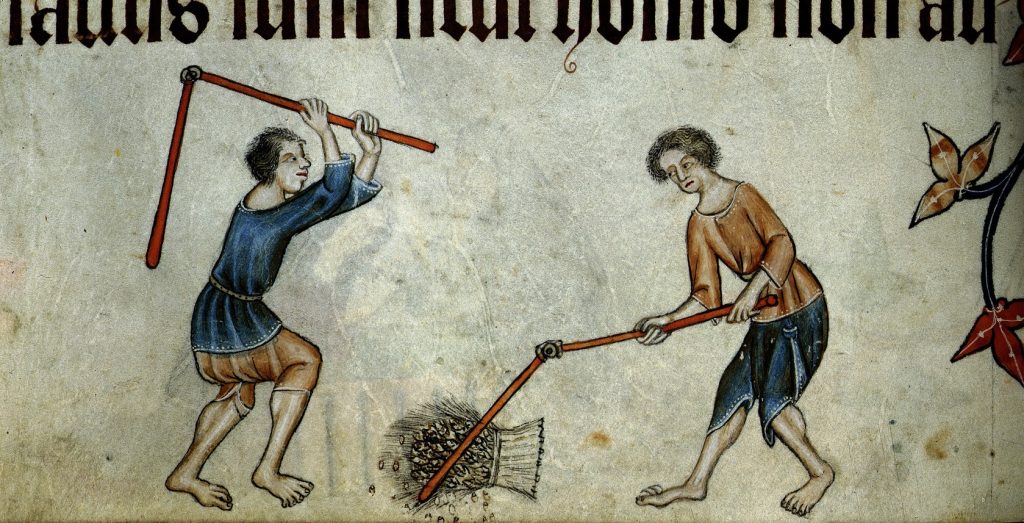MIQUEL FAUS FAUS
In 1377 Berenguer Vidal, a Valencian agricultural labourer, reported Sancho Navarro and Pere Mitjà to the Justicia Criminal for assault. According to the records, both men attacked Berenguer in the herba square (the space reserved for day labourers to find an employer) and seriously injured him. As part of his demands, the victim asked for a compensation of the wages lost due to the wounds, that is to say, 24 diners per day. Interestingly, the estimation made by the labourer was lower than the average salary given in the market, according to other sources, which from the second half of the 14th century ranged between 30 and 36 diners per day. Some witnesses in the trial even testified that agricultural wages could raise up to 48 diners per day, as high as one of a qualified construction worker.
The structure of this medieval labour market can provide us with the information needed to solve this apparent contradiction. The use of day labourers in the Valencian fields is documented from the foundation of the kingdom in the 13th century and has been studied for different observatories. However, cases such as that of Berenguer Vidal, in which the income depended only on waged work, were the minority. On the contrary, the vast majority of paid labourers were simply small tenants who combined the tasks in their small properties with some days of waged work to complete the family budget.

The possibility to alternate paid and autonomous work allowed small owners to choose carefully the days in which they wanted to be employed, prioritising those with higher pay rates. This was never an option for men such as Berenguer, who would have been forced to work the full year regardless of the wage paid in order to sustain his subsistence. This means two things, firstly, that small tenants had more agency when they participated in the labour market. And secondly, that the yearly income of a landless labourer was lower than what we could imagine if we took only the daily wage reflected in the source and multiplied it by the number of working days.
In his work ‘Seven Centuries of Unreal Wages’, John Hatcher criticised similar approaches present in the series of salaries created by historians such as Robert Allen or Gregory Clark arguing that these misrepresent the average income of the working class. According to Hatcher, if we only take the high wages paid by manors during periods of high demand of manpower and multiply them by the length of the working year, we will only obtain false figures that won’t represent the landless labourer or the small tenant.
That is why qualitative cases such as that of Berenguer Vidal are so revealing of the reality of medieval labourers. According to the estimates of the judicial process, his annual salary would have been roughly of 6000 diners. On the contrary, if we take the average payments in other sources, the yearly income would have oscillated between 7500 and 9000 diners. If we deflate these numbers with the prices of a consumer basket, such as that of Allen, we obtain welfare ratios that vary between 0,87 and 1,31, that is the difference between not making ends meet and being well over the respectability line. Qualitative reconstructions such as these allow us to better understand the living standards of day labourers in pre-industrial societies and recalibrate some of the studies of real wages.
Miquel Faus Faus graduated in History from the University of Valencia (2013-2017), gaining a masters in “Historia de la Formación del Mundo Occidental” from the University of Valencia (2017-2018). Since 2019 he has been a PhD student in history at the University of Valencia, with a provisionally titled thesis, “Work and Living Standards in Medieval Valencia (1300-1460)”. His research is financed by a FPU contract from the Spanish Ministry of Education, Culture and Sports and he is winner of the bursary “Països Catalans” of the “Institut d’Estudis Catalans” (2019-2020).
